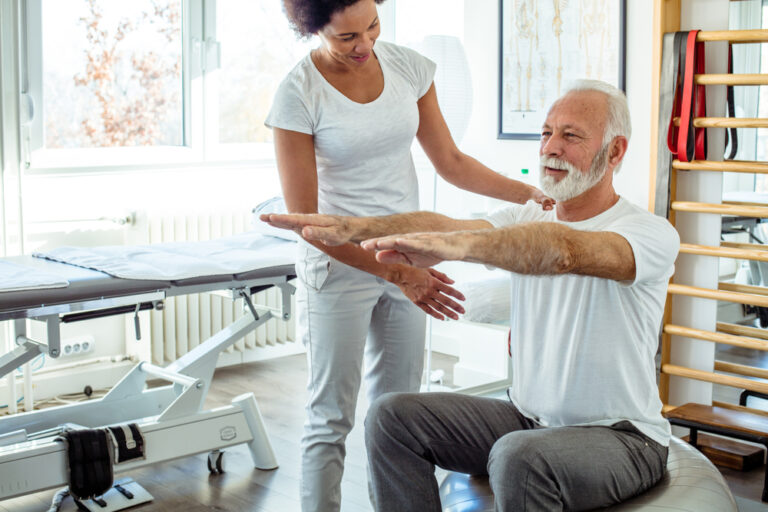by MARK SELLEY – Bermuda Stroke & Family Support Association Chairman and co-founder
Scientists will tell you that a stroke is damage to the brain from interrupted blood supply. It’s a medical emergency also known as a cerebral vascular accident or a brain attack.
Stroke survivors will tell you that it is a moment in their life that changes everything. Statistically only 10% of people fully recover from a stroke, the rest will have lifelong mild to moderate impairments that they learn to live with. In Bermuda the odds may be even less favourable.
Bermuda Stroke & Family Support Association Chairman and co-founder, Mark Selley’s experience is that “in 30 years of working with stroke patients I’ve never known anybody to make a complete recovery because of the part of the brain that’s affected.”
Interesting & Important Facts.
Symptoms of stroke include trouble walking, speaking and understanding, sudden blurred or partial vision as well as drooping or numbness of the face, arm or leg.
You’re at risk of having a stroke if you have high blood pressure, diabetes, irregular heartbeat (atrial fibrillation), elevated cholesterol or if you’re overweight, smoke or consume a lot of alcohol.
It may surprise people to know that stroke is not hereditary, which is good news because it means we can ‘health’ our way out of the high risk zone.
Most strokes are the first stroke. Of the 800,000 people who have a stroke in the United States each year, 600,000 of those are the person’s first stroke.
Racial Bias
The risk of having a first stroke is nearly twice as high for black people and they are more likely to die from the stroke than white people.
While the studies show a racial bias, the evidence doesn’t point to a gender bias. The risk is the same for men versus women. However, age does increase the risk – three-quarters of strokes occur in people who are 65 and older and it reduces mobility in more than half of the survivors in that age group. Even so, strokes can, and do occur at any age as Mr. Selley experienced, at the young age of 39.
DOES MODERN MEDICINE INCREASE THE CHANCE OF RECOVERY?
An estimated 2 million brain cells die during every minute of a stroke, which increases the risk of permanent brain damage. It is known that the brain can heal itself to an extent, by regenerating new cells. The time for most rapid recovery with intense rehabilitation therapy, is the first four months after a stroke, and continued slow recovery for up to two years.
Stroke treatment research has led to new developments in recent years, with some of it focused on stroke prevention such as an MRI (Magnetic Resonance Imaging) to take a detailed image of the brain, arteries, and blood vessels to determine the risk of a blockage or rupture.
Wearable smart devices are also used in monitoring heart rate, blood pressure, and other body readings to determine the risk of stroke. The sooner it is detected the better the chance of recovery.
New treatment options include:
Electrical cell or nerve stimulation which stimulates the cells in the face immediately after a stroke to increase blood flow to the brain and reduce post-stroke swelling in the brain. It has been shown to also stimulate the non-injured brain cells to function more efficiently to make up for the brain cells that have died or were damaged.
Surgery such as thrombectomy to remove a blood clot can be done up to 24 hours after the stroke.
A pilot study of vagus nerve stimulation showed that it could more than double the rate of recovery for patients with impaired upper limbs.
A non-invasive procedure used for over 20 years to treat severe depression is now seen to be highly effective in stroke rehabilitation. Repetitive transcranial magnetic stimulation (rTMS) involves an electrode being held near the patient’s head and magnetic pulses are sent through to the brain.
Everyone’s recovery is different, and the odds of recovery are significantly improved with immediate medical attention and rehabilitation therapy. A neurologist will establish a program of rigorous and intense rehab, to give the patient their best chance.”
He recommends, “Get overseas care immediately at a facility like Spaulding Rehabilitation Hospital in Boston, one of the best rehabilitation centres in the U.S. and part of Massachusetts General Hospital.”
The Bermuda Stroke & Family Support Association can introduce people in Bermuda to the facility. He said, “I have a very privileged position with Mass General where, even though I’m not a medical practitioner, I can refer patients to them for overseas treatment. If you have the insurance it’s the way to go.”
He describes the rehab that is required as “aggressive and continued. It’s repetitive retraining of the brain with six to seven hours of exercises and movement every day with 15-minute breaks. You might have several specialists working on you every day, non-stop until you reach a level of independence, for example where you can transfer from a wheelchair to a bed or a standard chair. Treatment after a stroke is no picnic, you cannot recover without rehab therapy.”
The many aspects to recovery.
“You go through all sorts of changes. There’s the physical, mental and emotional health – all three things are hard to pull together for a magical victory. Depression is part of the stroke because your brain is traumatized, you don’t think positively, you feel like you’re never going to get better. You’re away from your family for several months and you feel isolated and scared. Recovery is slow and strenuous.
Mr Selley said, “Life becomes a rehab, it’s what I do every day, just living life is rehabilitation because I have to learn to do everything in a new way. To get out of bed every morning I give myself a pep talk and plan how I’m going to address the day.”

